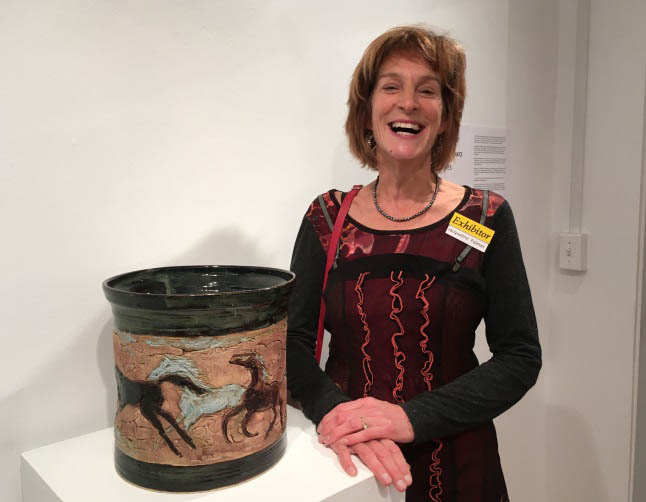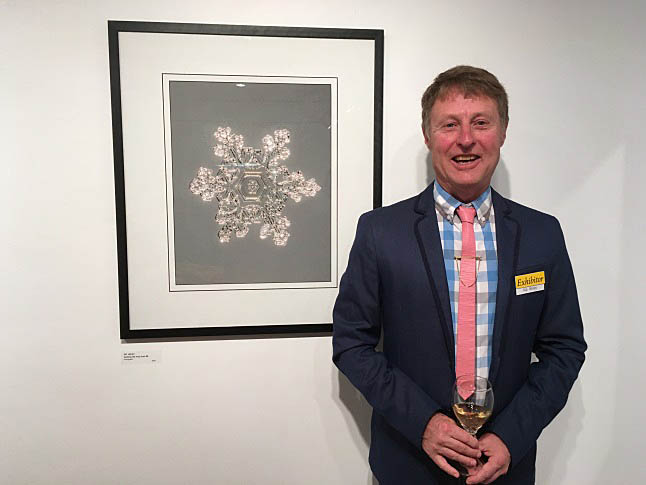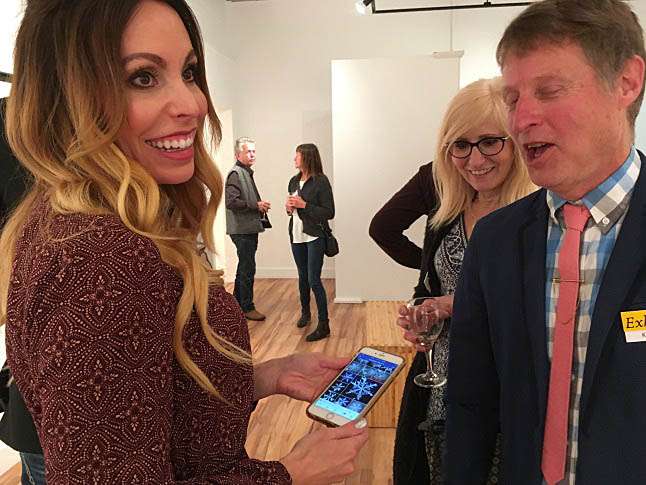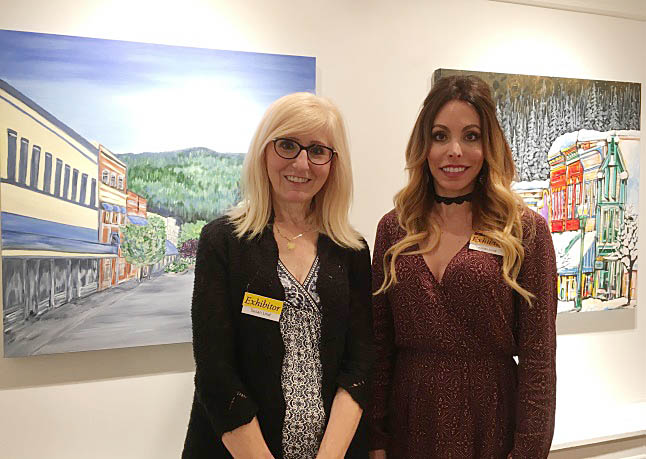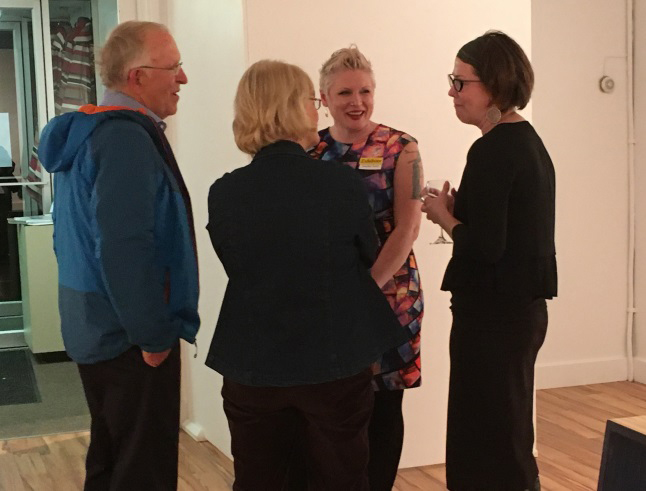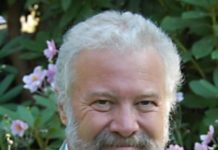By Laura Stovel
The grace of a horse, the wonder of a snowflake and the magic of a mother-child relationship: four new exhibits that opened Friday at the Revelstoke Visual Arts Centre, celebrate these themes.
Kip Wiley’s stunning photos of snowflakes, featured in the large gallery, were inspired by his decades of skiing in the back country. The exhibit, entitled Seeking the Holy Grail, is a close-up look at something that is central to the Revelstoke experience.
In Auguries of Innocence, William Blake wrote about seeing “the world in a grain of sand,” Wiley said. By looking closely at something we take for granted, we see a whole new world. In Wiley’s case that ‘something’ is snow.
The ‘Holy Grail’ for Wiley is the perfect ski day. “Powder skiing is one thing, day in and day out, but there are those perfect days, a combination of terrain, snow stability, snow quality and friends make it a stellar day.”
In the far gallery, mother and daughter Susan and Kristi Lind displayed nature and town-inspired paintings. Their close relationship is evident in the similarity of their work. Whether they are painting trees, mountains or downtown scenes, their works fit together nicely. Kristi’s colours are brighter and brush strokes thicker, Susan Lind said, but the two have strongly influenced one another.
“It’s pretty special that we get to do something together,” daughter Kristi Lind said. “We’ve both been painting for a few years now. I started a few years before her and inspired her to start painting. We go on a lot of hikes together. We definitely hang out a lot together.”
They often paint at the same time. “She’ll be in the kitchen and I’ll be in the living room. It’s the same space and we give each other advice,” Kristi said.
Coincidentally Kristi Lind spent some time photographing snowflakes with her phone a few years ago. She was able to show Wiley her photos during the opening of the exhibit on Friday evening.
Jewelles Smith’s exhibit next to the Linds’ also dealt with motherhood but in the context of disability. The exhibit, called Dialogues on Motherhood: Visual Interrogations, grew out of Smith’s academic research on mothering and disability.
“I’ve been working through the theoretical part of my PhD and I would find that every time I was struggling I would end up in front of my canvas painting. Slowly over time these works unfolded as I went through” academic theories, said Smith, who is doing an interdisciplinary PhD at UBC Okanagan.
“I’m trained in human rights monitoring and breaking down international human rights conventions. Over the years I’ve been gravitating toward the experience of disabled mothers – it’s my own experience – and looking at how disabled mothers navigate the world. Women would tell me their stories. There’ve been cases where obviously disabled mothers lose custody of their children right at birth. Or disabled mothers who are married and get divorced lose custody because of the prejudices of our judges who don’t understand that mothering can look different and be just as good,” she said.
Smith’s research will involve interviewing disabled mothers about their experiences and in the meantime she is exploring the subject through her art.
The fourth exhibit is called A Thousand and Two Wild Horses featuring works by potter and painter Jacqueline Palmer. It is a wonderland of horses etched or painted into clay.
“I’ve always loved horses and I’ve been drawing them since I was a kid,” she said.
In addition to her beautiful pottery, Palmer created an allegorical series of horse paintings depicting the decline and rejuvenation of BC forests due to the mountain pine beetle. “The black horse foreshadows the turning of the forest,” she said, describing the first canvas. In the second canvas, behind the horses, she painted the rust-coloured trees of a beautiful but dying forest.
The third canvas featured a white mare and her foal (representing rebirth) with a few trees behind them. “We always knew the forest would recover. There are fewer but stronger trees; they are the ones that survived and they will be more resilient.” A quote from Ecclesiastes 3:2 was painted on the bottom of the third canvas: “a time to be born and a time to die.”
Spirituality is an important part of Palmer’s life and work and the suggestive images of animals that seem to emerge from the clay of her pots seem to speak to the ages or another dimension of life.
“I listen to music that is inspiring, just to calm me down because my work is intense,” she said. “And I do pray through my day. I have a verse from the Bible that helps me accept what I’m doing. Part of me thinks it’s more important to be out with people and here I am in the basement doing pots.”
“Make it your ambition to work with your hands, to lead a quiet life and to mind your own business.” (1 Thessalonians 4:11)
Here are some photos from the exhibition, which is open to the public Tuesday through Saturday from noon to 4 pm until October 28:
